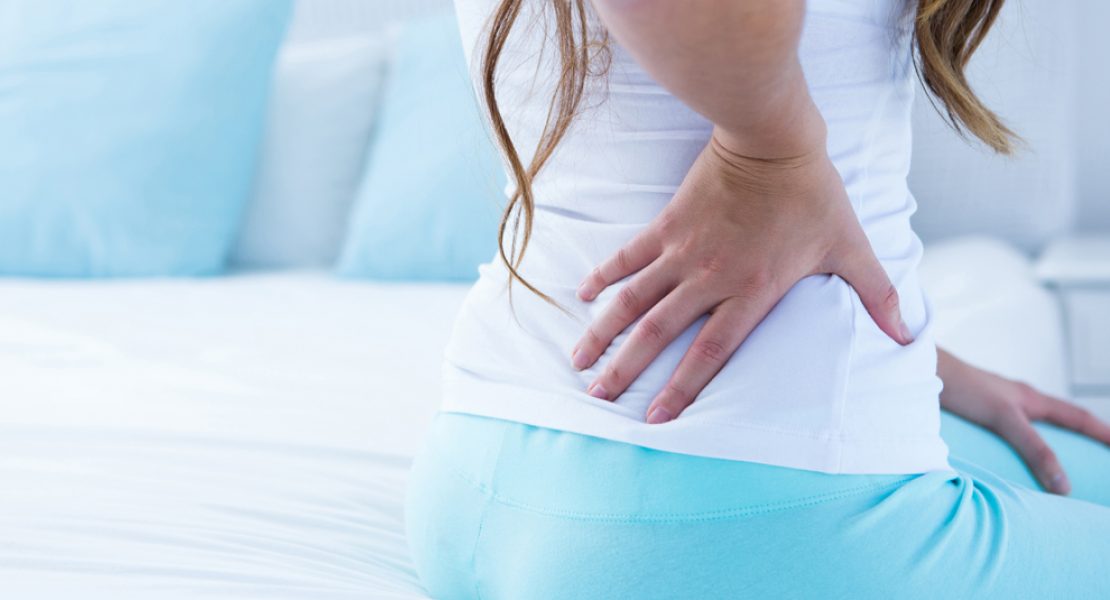The Surprising New Fix for Low Back Pain

Acute low back pain (with pain that emerges suddenly) can be debilitating because, unlike a sprained wrist, a painful back is hard to isolate from its surroundings. Standing, sitting, walking, twisting – the lower back is involved in all of it, and everyday motions can be agonizing.
Luckily, St. Luke’s Comprehensive Spine program is leading the way toward a simpler, yet highly effective, solution to acute back pain: physical therapy as the first line of treatment.
By avoiding unnecessary imaging, surgery, the use of potentially addictive medications, and other protocols, St. Luke’s Comprehensive Spine program can reduce the cost and length of care for patients, while reducing the need for prescription pain relief. The best part: You can self-refer. In Pennsylvania and New Jersey, patients have the right to be evaluated and treated by a Direct Access physical therapist for 30 days of treatment without prescription from a doctor.
“We’ve found that most low back pain is not associated with an underlying condition such as a ruptured disk or a tumor,” says Michael Abgott, MD, vice president and medical director of primary care for St. Luke’s Physician Group. “If we find no red flags during our initial evaluation, we often refer the patient directly to a physical therapist.”
Although the triage process is thorough, it’s possible that other situations will emerge during the physical therapy sessions. In such cases, the advanced spine care practitioner will temporarily discontinue PT while the new symptoms are investigated.
Prompt attention to painful symptoms can be a key to quicker relief, says Steven Kareha, DPT, PhD, director of the orthopedic physical therapy residency program at St. Luke’s. “Through research, we’ve found that many patients often go from provider to provider, and don’t get the care they need until months down the road. That’s frustrating for everyone.” He adds that quickly beginning a physical therapy program can save patients plenty of time and money. “If you start within two weeks of pain onset, you might save $2,000 to $3,000 over the course of a year.”
And it isn’t necessarily a long-term commitment. Dr. Kareha says acute pain can sometimes clear up after just a couple of sessions; other cases may take longer. Treatment plans are tailored to the individual, and the advanced spine care practitioner will develop a projected schedule during your initial consultation.
David Dapkewicz is proof of the program’s effectiveness. “Just before Christmas 2017, I woke with an incredible amount of pain in my left hip; it radiated down to my knee,” he says. “I had my right hip replaced 15 years ago and thought this meant the other side was starting to go.”
Over the next several months, Dave found that neither over-the-counter nor prescription pain relievers brought any relief. And the pain spread into his lower back as well. Dave’s internist diagnosed a sciatic nerve issue, and referred him to St. Luke’s Comprehensive Spine program. “We determined that a combination of hands-on techniques, effective repeated motions, and specific exercises would decrease his pain and help him get back to his normal life,” says Dr. Kareha.
“I started treatment with Dr. Kareha the same day,” Dave recalls. “We scheduled twice-weekly sessions for the first two weeks, and then gradually tapered off. As we progressed, Dr. Kareha kept an eye on my pain and other symptoms; and when other issues emerged – a flare of pain in a different area, for example – he altered the program in order to address it.”
Dave’s pain was relieved without rigorous testing, without imaging, and without surgery. “I never would have given PT a thought before,” says Dave.
After his discharge, Dr. Kareha gave Dave a set of exercises to perform at home. “Our focus is on helping patients get better, and staying better,” he says. “These exercises are intended to decrease the risk of coming back for the same problem.”
5 Ways to Prevent Back Pain Before it Starts
1 | Keep your back and abdominals strong. Aim to do exercises such as planks, side planks, assisted crunches (with your lower legs resting comfortably on a chair) at least 2 or 3 times a week.
2 | Gentle backs stretches can help prevent stiffness and injury. Consider starting every morning with a Cat-Cow yoga pose. Get on your hands and knees with a flat back. With each inhale, arch the spine and turn your gaze upward; with each exhale, round your back and turn your gaze downward. Repeat.
3 | Always stand and sit up straight. Slouching can cause or exacerbate back pain.
4 | Avoid heavy lifting. If you do lift something heavy, bend your knees and keep your back straight. This way, your leg muscles will do most of the work.
5 | Get active and eat a balanced diet. If you are a healthy weight, you’ll have less strain on your back.
Got back pain?
Find out if PT is right for you.
The first step toward admission for back pain is a brief, over-the-phone evaluation assessment performed by one of St. Luke’s Comprehensive Spine’s triage nurses. One of those nurses is Robin Gregus, who says the evaluation is a process of elimination. After getting basic information (what hurts, when it started, and so on), she asks several questions focused on more serious situations. “If a back-pain patient is experiencing trouble with urinating, has an unexplained weight loss, difficulty walking, or other conditions, we immediately refer them to their primary care physician, an urgent care center, or even for a surgical consult,” she says.
Replies of “no” to those questions indicates that the patient is a likely candidate for physical therapy – the first step toward recovery – and that happens about 80% of the time. Next, the nurse schedules a further evaluation with one of St. Luke’s advanced spine care practitioners to determine the best specific course of treatment. And because St. Luke’s maintains multiple physical therapy sites and numerous practitioners, patients can get the hands-on care they need without delays. “We want these patients to be able to return to their normal activities as soon as possible,” says Gregus.
For more information on St. Luke’s Comprehensive Spine program, visit sluhn.org/spine





















